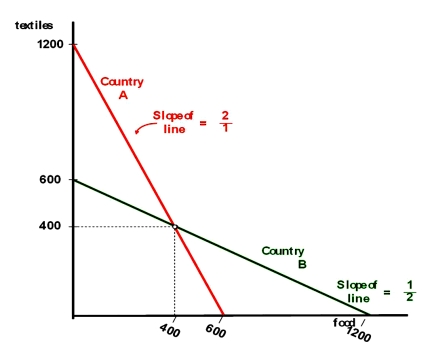Multiple Choice
Countries A and B currently consume 400 units of food and 400 units of textiles each and currently do not trade with one another. The citizens of country A have to give up one unit of food to gain two units of textiles, while the citizens of country B have to give up one unit of textiles to gain two units of food. Their production possibilities curves are shown.  Under the theory of comparative advantage
Under the theory of comparative advantage
A) The citizens of country A should make food and trade with the citizens of country B for textiles.
B) The citizens of country A should make textiles and trade with the citizens of country B for food.
C) There are no gains from trade in this example.
D) A is twice as good as B at making food and B is twice as good as A at making textiles.
Correct Answer:

Verified
Correct Answer:
Verified
Q24: A corporation that can source its products
Q58: Today for a MNC to produce merchandise
Q59: MNCs can use their global presence to<br>A)take
Q60: Which state has a comparative advantage in
Q62: A MNC can<br>A)be a factor that increases
Q64: What major dimension sets apart international finance
Q65: A firm with concentrated ownership<br>A)may give rise
Q66: Country A can produce 10 yards of
Q67: Suppose Mexico is a major export market
Q82: Since its inception the euro has brought